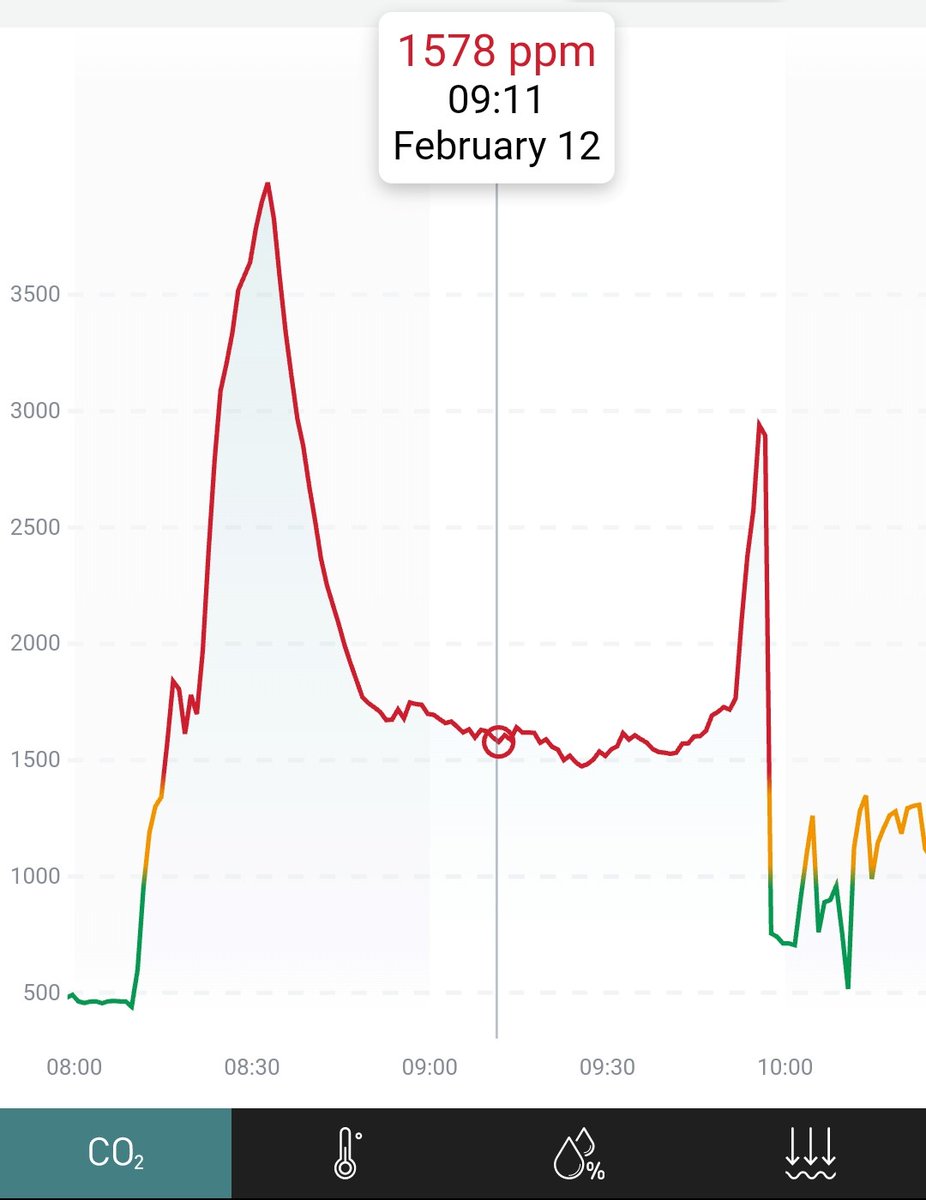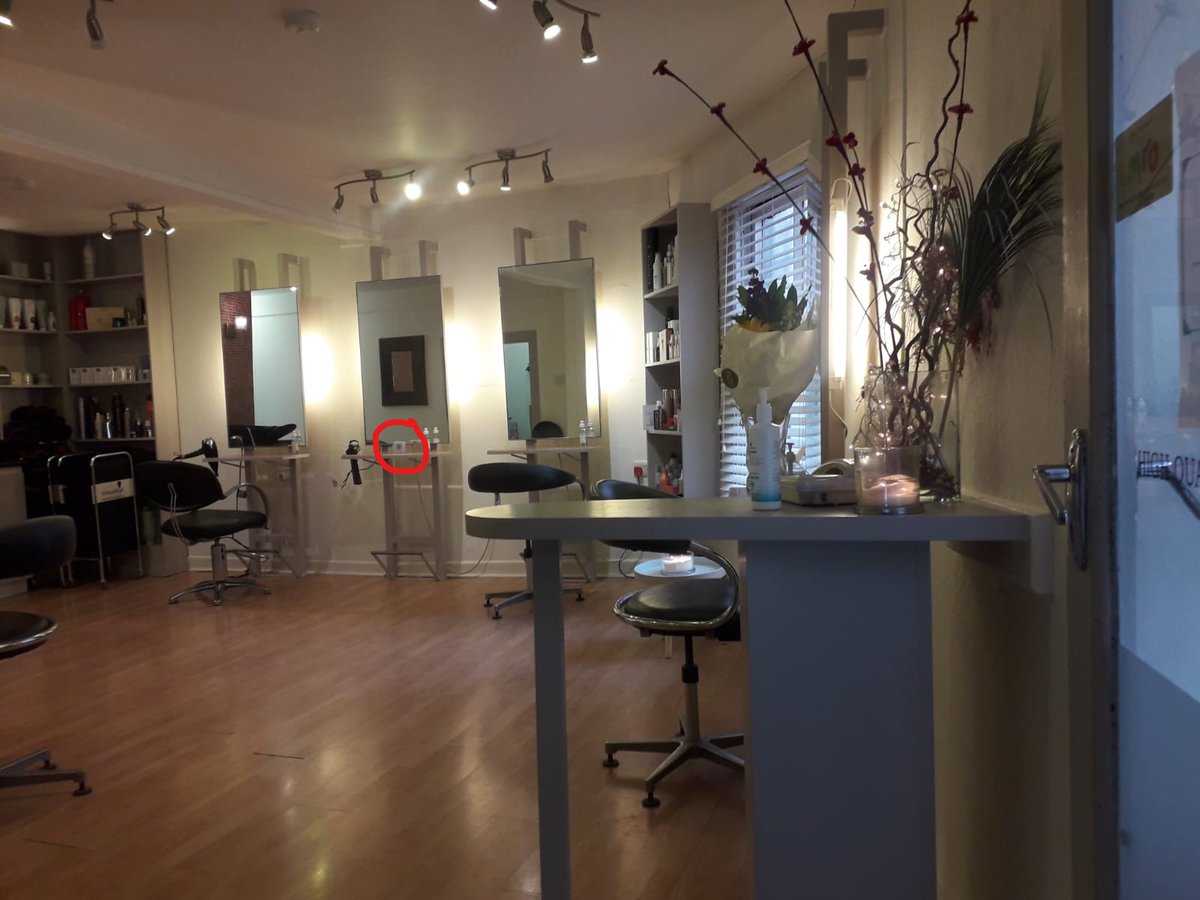Thread on the CO2 readings that I took during my four short flights with @KLM @KLM_EIR last week.
Remember, CO2 at 800 ppm means that 1% of the air you breathe in has been breathed out by others.
At 1200 ppm the rebreathed fraction is 2%.
At 2400 ppm it is 5%.
#CovidCO2
1/
Remember, CO2 at 800 ppm means that 1% of the air you breathe in has been breathed out by others.
At 1200 ppm the rebreathed fraction is 2%.
At 2400 ppm it is 5%.
#CovidCO2
1/
Flight 1 (Embraer 175 aircraft, 95% full):
~500 ppm in @CorkAirport
Shoots up to 2400 ppm while boarding, drops when air circulation kicks in.
Settles around 1900 ppm mid flight. Rises to 2500 ppm when disembarking.
RH ~30% on plane.
2/
~500 ppm in @CorkAirport
Shoots up to 2400 ppm while boarding, drops when air circulation kicks in.
Settles around 1900 ppm mid flight. Rises to 2500 ppm when disembarking.
RH ~30% on plane.
2/

Flight 2 (Boeing 737-700, 60-70% full).
Similar profile but levels much lower
on this bigger aircraft.
The air felt fresher and CO2 levels reflected that.
3/
Similar profile but levels much lower
on this bigger aircraft.
The air felt fresher and CO2 levels reflected that.
3/

Flight 3 (Embraer 190 aircraft, 95% full):
Lower CO2 levels while boarding in this case, but still peaking at 2000 ppm mid-flight and 2500 ppm while disembarking.
4/
Lower CO2 levels while boarding in this case, but still peaking at 2000 ppm mid-flight and 2500 ppm while disembarking.
4/

Flight 4 (Embraer 190 aircraft, 95% full):
Same aircraft as Flight 1 and very similar profile, except for disembarking period where the CO2 levels did not rise sharply because (for some reason) the air supply remained on.
5/
Same aircraft as Flight 1 and very similar profile, except for disembarking period where the CO2 levels did not rise sharply because (for some reason) the air supply remained on.
5/

During the flight, air is refreshed and passed through HEPA filters, so the number of airborne respiratory particles (and COVID transmission risk) is greatly reduced, even if CO2 is 1800-2000 ppm.
6/
6/
Highest risk of COVID transmission is during boarding & disembarking because:
1. Respiratory rates are higher when people are moving than when sitting down during the flight.
2. Air circulation and filtration are generally not operating to the same extent as mid-flight.
7/
1. Respiratory rates are higher when people are moving than when sitting down during the flight.
2. Air circulation and filtration are generally not operating to the same extent as mid-flight.
7/
These CO2 levels are within the normal range that I have come across.
Thankfully, they were a lot lower than this😲👇
8/
Thankfully, they were a lot lower than this😲👇
8/
https://twitter.com/saugarmaripuri/status/1499910707185434627?s=20&t=3lCp28bNN-_bufK_gW8ONg
But it would be great if airlines could increase fresh air delivery rates further during the flight (CO2 levels of 2000 ppm for several hours is not great!) and especially during boarding/disembarking.
End
End
• • •
Missing some Tweet in this thread? You can try to
force a refresh

















